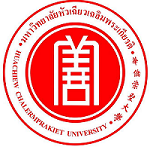Please use this identifier to cite or link to this item:
https://has.hcu.ac.th/jspui/handle/123456789/4693Full metadata record
| DC Field | Value | Language |
|---|---|---|
| dc.contributor.author | 张晶莹 | - |
| dc.contributor.author | Zhang Jingying | - |
| dc.contributor.author | 艾红娟 | - |
| dc.contributor.author | Ai Hongjuan | - |
| dc.contributor.other | Huachiew Chalermprakiet University. College of Chinese Studies. Graduate Student | en |
| dc.contributor.other | Southwest University. School of Literal Arts | en |
| dc.date.accessioned | 2025-10-19T05:28:25Z | - |
| dc.date.available | 2025-10-19T05:28:25Z | - |
| dc.date.issued | 2023 | - |
| dc.identifier.citation | วารสารวิชาการภาษาและวัฒนธรรมจีน 10, 1 (มกราคม-มิถุนายน 2566) : 113-124 | en |
| dc.identifier.uri | https://has.hcu.ac.th/jspui/handle/123456789/4693 | - |
| dc.description | สามารถเข้าถึงบทความฉบับเต็ม (Full Text) ได้ที่ : https://so02.tci-thaijo.org/index.php/clcjn/article/view/257493/176629 | en |
| dc.description.abstract | 词汇反映着社会发展和语言发展的状况,也标志着人们对客观世界认识的广度和深度。不同的社会历史、信仰、风俗、地理环境、审美情趣等均有所差异,这也使得不同的民族的词汇语音与意义有不同的体现。本文通过对比汉语词典及泰汉互译词典中“黑/ดํา”的词义, 结合中国古籍文献,分析汉泰语言中“黑/ดํา”词义的完全对应、部分对应和不完全对应三种关系。研究结果显示,这三种对应关系表明在汉泰两种语言中“黑/ดํา”的词义确实存在着相似性与差异性,而这些相似性与差异性可能源于两国文化的不同。本文详细剖析汉泰语言中“黑/ดํา”的词义内涵,从文化角度解析其差异,旨在日后在汉语教学中能更好地对泰国的汉语学习者进行教学指导、词语运用以及中国文化输出。 | en |
| dc.description.abstract | Vocabulary reflects the development of society and language, and also signifies the breadth and depth of people's understanding of the objective world. Different social history, beliefs, customs, geographical environment, aesthetic taste, etc. are different, which also makes the pronunciation and meaning of words of different nationalities have different manifestations. This article compares the meanings of "black" in Chinese dictionaries and Thai Chinese translation dictionaries, and analyzes the three relationships of complete correspondence, partial correspondence, and incomplete correspondence of the meaning of "black" in Chinese and Thai languages, combined with ancient Chinese literature. The research results show that these three corresponding relationships indicate that there are indeed similarities and differences in the meaning of "black" in the Chinese and Thai languages, and these similarities and differences may stem from cultural differences between the two countries. This article provides a detailed analysis of the semantic connotations of "black" in the Chinese and Thai languages, analyzing their differences from a cultural perspective, with the aim of providing better teaching guidance, word usage, and Chinese cultural output for Thai Chinese learners in Chinese language teaching in the future. | en |
| dc.language.iso | zh | en |
| dc.publisher | มหาวิทยาลัยหัวเฉียวเฉลิมพระเกียรติ | en |
| dc.subject | ภาษาจีน -- การศึกษาและการสอน – ไทย | en |
| dc.subject | Chinese language -- Study and teaching – Thailand | en |
| dc.subject | 汉语 -- 学习和教学 -- 泰国 | en |
| dc.subject | วัฒนธรรมจีน | en |
| dc.subject | Chinese culture | en |
| dc.subject | 中国文化 | en |
| dc.subject | ภาษาจีน – การใช้ภาษา | en |
| dc.subject | 汉语 -- 语言使用 | en |
| dc.subject | Chinese language – Usage | en |
| dc.subject | ภาษาศาสตร์เปรียบเทียบ | en |
| dc.subject | 比较语言学 | en |
| dc.subject | Comparative linguistics | en |
| dc.subject | ภาษาไทย – การใช้ภาษา | en |
| dc.subject | Thai language -- Usage | en |
| dc.subject | 泰语 -- 语言使用 | en |
| dc.title | 汉泰语言“黑/ดํา”的词义对比研究 | en |
| dc.title.alternative | A Comparative Study of the Meaning of "Black" in Chinese and Thai Languages | en |
| dc.type | Article | en |
| Appears in Collections: | College Of Chinese Studies - Articles Journals | |
Files in This Item:
| File | Description | Size | Format | |
|---|---|---|---|---|
| A-Comparative-Study-of-the-Meaning-of-Black-in-Chinese-and-Thai-Languages.pdf | 140.08 kB | Adobe PDF | View/Open |
Items in DSpace are protected by copyright, with all rights reserved, unless otherwise indicated.
